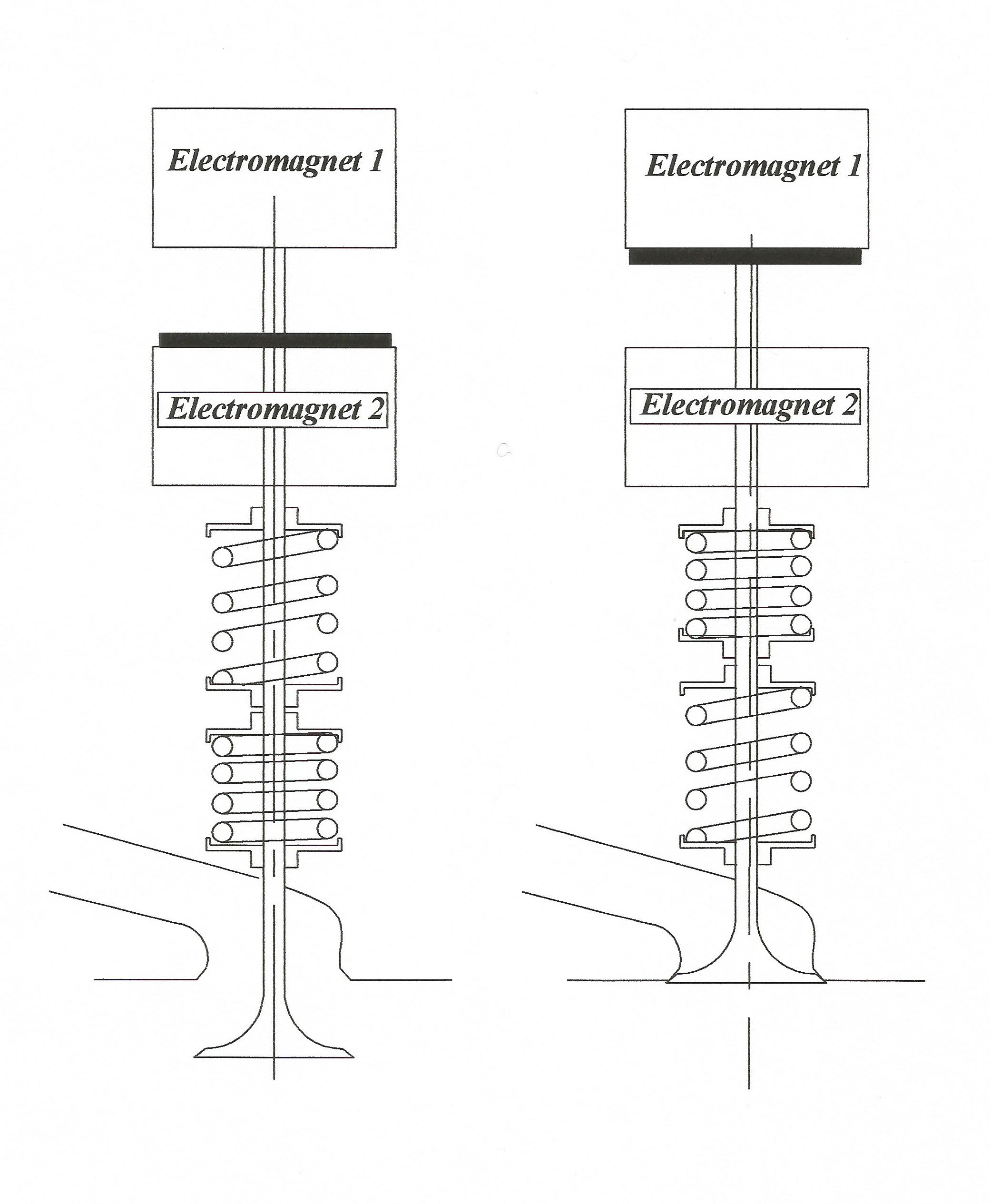The camless engine (2)
The demise of the camshaft has been predicted for many years. Optimised over a narrow window of engine operating range, in one way the camshaft can be used to enhance engine performance, but in others it can also limit it. So when optimised at one particular condition in the real world, where engines are used at a much wider range of speeds and loads, overall the engine may become woefully inefficient.
Cam phasers, to adjust intake or exhaust timing (or both) are one way to limit the damage, but to tackle the real problem, many engineers believe that the camshaft has to be discarded completely. So by taking direct control of the valves, and timing their opening and closing events as well as the amount of lift – by hydraulic, pneumatic or electromagnetic means – the design of the internal combustion engine could be on the cusp of a whole new lease of life. As ever though, it is all down to cost and complexity.
Hydraulic systems seem to be the least expensive and perhaps the most practical way so far of doing this. Although generally not totally camless, hydraulic systems tend to use an actuator activated by a single camshaft – usually the exhaust camshaft – and an integrated fast-acting two-way solenoid valve operated by valve control software. In contrast to conventional mechanical valvetrains, where the cam contour is transferred to the engine valve via a rigid element (such as a tappet or finger follower), hydraulic systems use engine oil in a high-pressure chamber as an intermediary.
When the solenoid valve is closed, the system operates as an hydraulic ram. However, when open, the cam and valve are effectively disconnected, allowing a wide number of lift/timing combinations within the cam profile. Although not totally camless, the traditional throttle is all but redundant, and many of the benefits of independent valve lift and timing can be demonstrated.
The most popular way to dispense with the cam, according to the current way of thinking, would seem to go electromagnetic. Such systems are generally based on linear spring-mass actuators [Fig. 1] and use the principle of the potential energy exchange between two springs and magnetic coils to control the position of the armature to which the valves are attached. For such a system to be acceptable in use, key characteristics should offer the quickest opening and closing times for high-speed operation, have an acceptable impact velocity when closing and, above all, low electrical power consumption.
A typical such system will consist of an upper and lower magnetic core which together will define the lift of the valve. Actuated by the valve control unit under closed-loop control from a signal generated by the engine ECU – much like a modern-day fuel injector – the current necessary to energise the coils is modulated using voltage pulse width profiles. Permanent magnets are used to improve the response characteristics of the system, in particular to produce better control during the opening and closing ramps where the impact velocities at the valve seat and as well as those between armature and valve head have to be controlled – in fact, just like the opening and closing ramps of a traditional camshaft!
To improve the opening velocity, parts need to be lightweight commensurate with adequate durability, while the spring rates of the two springs needs to be high. Other electromagnetic systems can use hydraulic ‘snubbers’ to control the valve seating velocity, but the resulting action is much the same. Clearly, even these designs are not totally ideal, as they have fixed valve lifts, but while these systems are not yet market-ready, given sufficient impetus in the way of governmental fiscal penalties and fuel economy or CO2 targets for passenger cars, that day will come soon.
 Fig. 1 - First-generation electromagnetic system
Fig. 1 - First-generation electromagnetic system
Written by John Coxon